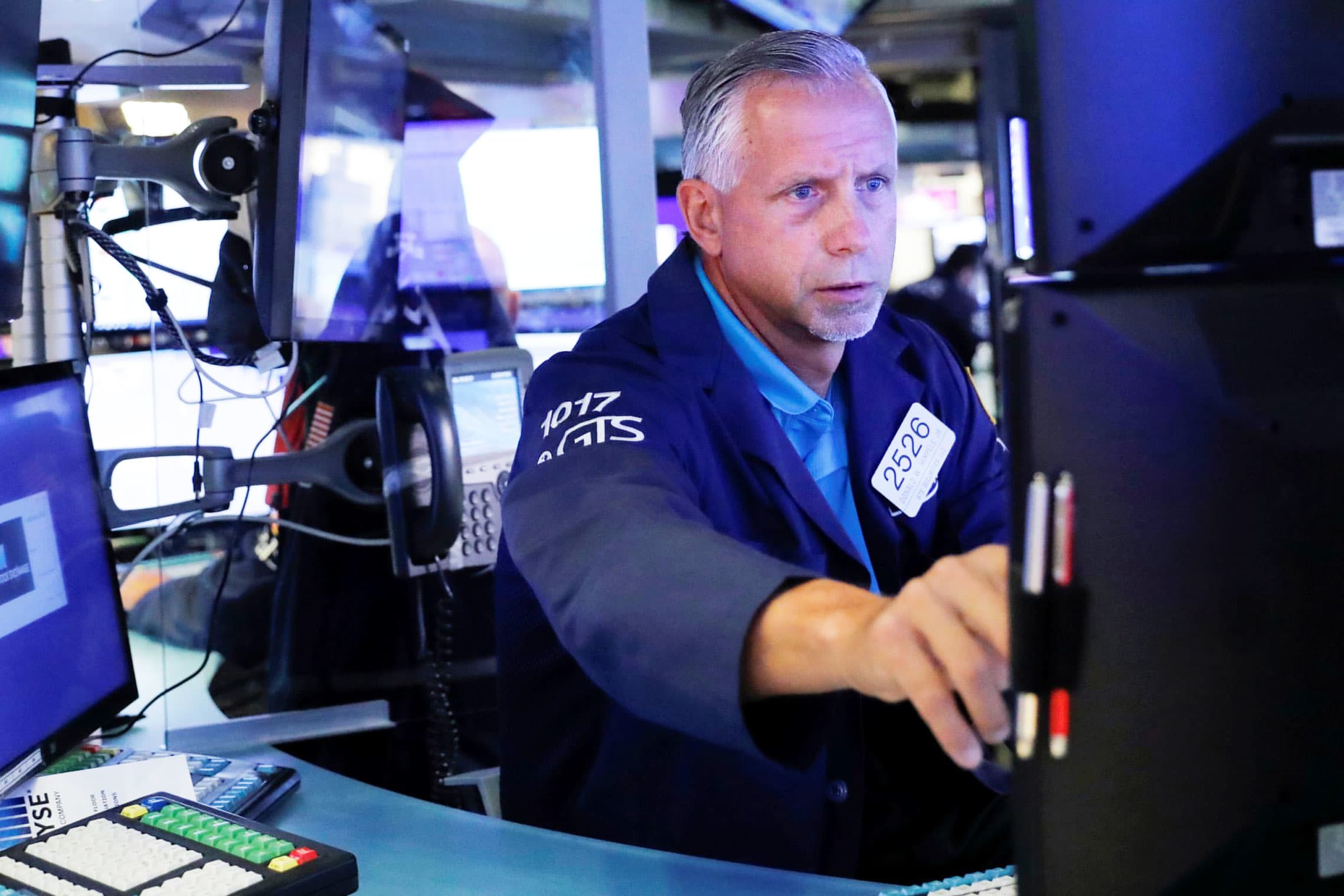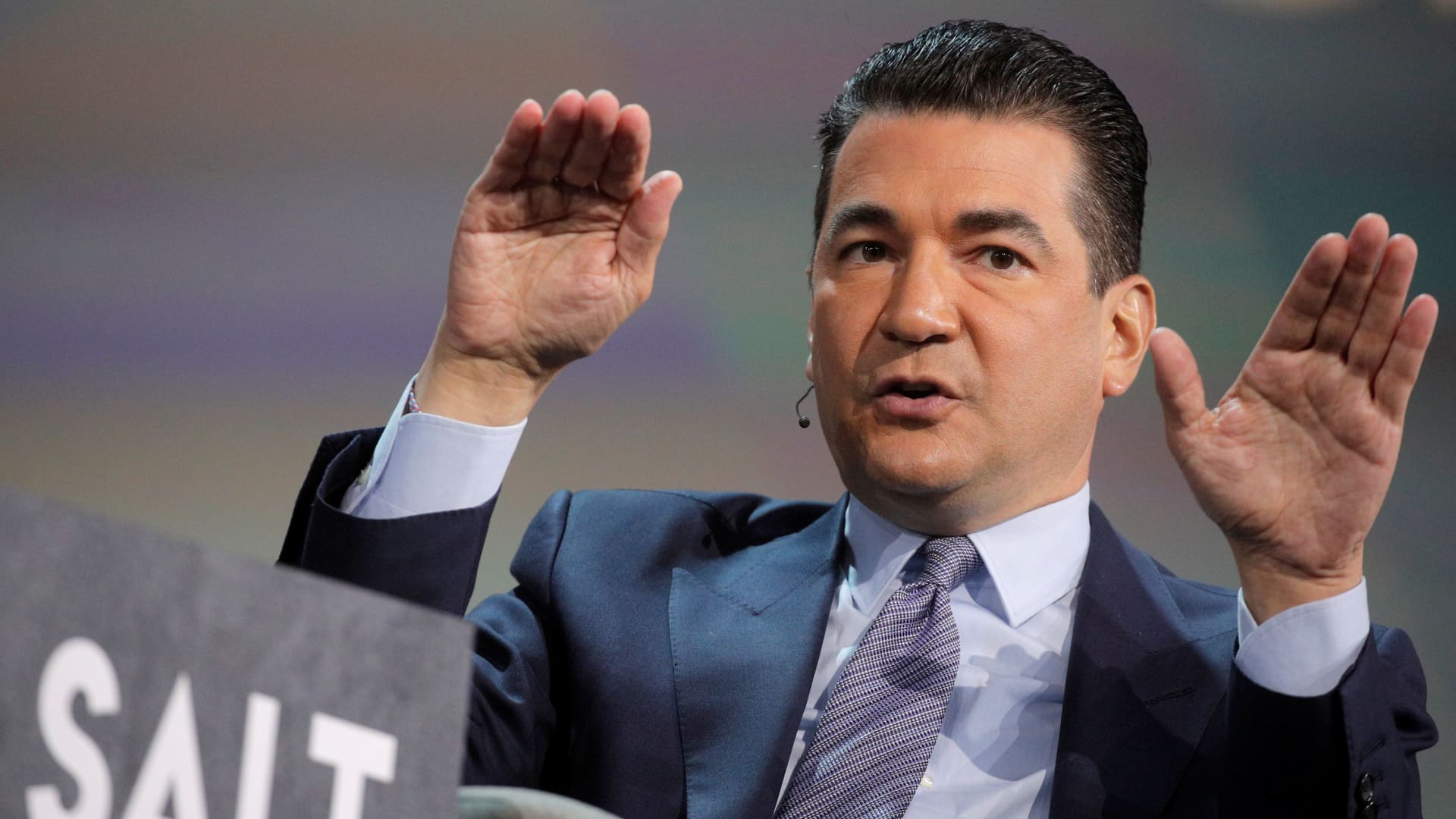Dow falls for the fourth straight day, drops 150 points
On Wednesday, the Dow Jones Industrial Average and S&P 500 fell for the third day straight.

The Dow Jones Industrial Average fell more than 100 points on Thursday, the 30-stock average's fourth day of losses.
The Dow Jones Industrial average lost about 125 points, dragged down by Amgen and Merck. The S&P 500 fell 0.3%, while the Nasdaq Composite traded near the flatline.
Investors remained cautious as they try to discern what's next to happen with the delta variant, the economic reopening and the Federal Reserve.
Several airlines on Thursday lowered their forecasts because of the resurgence in Covid. United Airlines, American Airlines and Southwest Airlines each gave cautious comments; however their stocks remained in the green.
Boston Beer tanked fell 4% after pulling its earnings guidance amid slowing growth in its hard seltzer brand. Meme-favorite GameStop dropped, then pared some losses after the video-game retailer posted a narrower loss compared with the year prior. The retailer did not provide an outlook or grander turnaround plans.
Helping sentiment was a better-than-expected weekly reading on jobless claims. Initial jobless claims came in 310,000, which was below expectations of 335,000 claims. This marked another fresh low for the pandemic era.
Moderna shares rose more than 7% after the drug maker said it's developing a single dose vaccine that combines boosters against Covid and the flu.
Shares of athletic retailer Lululemon surged more than 11% and furniture retailer RH rose nearly 8% on the back of better-than-expected earnings. Lululemon also offered a stronger-than-forecast outlook for the third quarter and the year.
The Fed meets on Sep. 21-22 and investors are worried the central bank will indicate a move to slow down its monthly $120 billion in bond purchases, which have kept rates low and boosted the recovery from the pandemic.
"This may not end now. But when it ends, it could end badly," wrote Savita Subramanian, head of equity and quantitative strategy at Bank of America, in a note Wednesday. "If taper means no uspide to the S&P 500, tightening could be worse."
Subramanian has a 4,600 year-end S&P 500 target, about 2% from here.
The European Central Bank said it would slow down the pace of its own bond purchases on Thursday.
"Based on a joint assessment of financing conditions and the inflation outlook, the Governing Council judges that favourable financing conditions can be maintained with a moderately lower pace of net asset purchases under the (PEPP) than in the previous two quarters," the ECB said in a statement.
On Wednesday, the Dow and S&P 500 fell for the third straight day. Both are in the red for the week and for the month so far. September historically can be a treacherous month for stocks. The market still hasn't regained its footing since the August jobs report released Friday came in much worse than expected.
The Federal Reserve said in its latest "Beige Book" that U.S. businesses are experiencing rising inflation that is being intensified by a shortage of goods and likely will be passed onto consumers in many areas. The central bank also reported that growth overall had "downshifted slightly to a moderate pace" amid rising public health concerns during the July through August period that the report covers.
Despite recent losses, the major benchmarks are still up big for the year and within striking distances of their all-time highs. The S&P 500, up roughly 20% in 2021, is about 1% from its all-time high. The Dow, up 14% this year, is about 2% from a record.

 Fransebas
Fransebas 
































